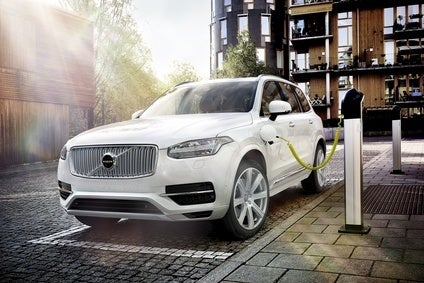
Volvo will use the XC90 to relaunch itself in the US market where sales have declined for 11 years to slip to 58,000 from a peak of more than 140,000 in 2005, said Alain Visser, the Geely-owned automaker’s senior vice president, marketing, sales and customer service.
“American buyers haven’t a clue we are around,” he said at the Paris motor show. “We have had no new product and no new investment there since 2010.
“Our brand awareness is 6% and we have a 0.3% market share so we’re implementing new strategies and making new investments which will pay off next year when we launch the XC90,” said Visser.
The XC90, unveiled at the Paris show, will be the oldest car in Volvo’s line-up within four years as the company, starved of investment under Ford’s ownership, reaps the benefit of the largesse of Chinese owner Geely, spending US$11bn on its new flexible vehicle architecture.
This rapid roll-out of new product isn’t something that Volvo is used to, he said, adding that the improvement in quality that the new platform brings will allow it to charge higher prices for its products.
Replacing the line-up will help put Volvo on track to selling 700,000 cars a year by 2019 as it heads towards its long-term target of 800,000.

US Tariffs are shifting - will you react or anticipate?
Don’t let policy changes catch you off guard. Stay proactive with real-time data and expert analysis.
By GlobalDataThis year sales will reach a record 470,000, up 10% year-on-year, he said.
Outside of the US life is distinctly rosier. Sales are up in nearly every European country as the market stabilises while sales in China will reach 80,000 this year, up from 60,000 last year.
The European success is partly down to the new Drive-e powertrains as well as improved brand perception.
“We’ve also become much more efficient in our sales organisation,” Visser said.



